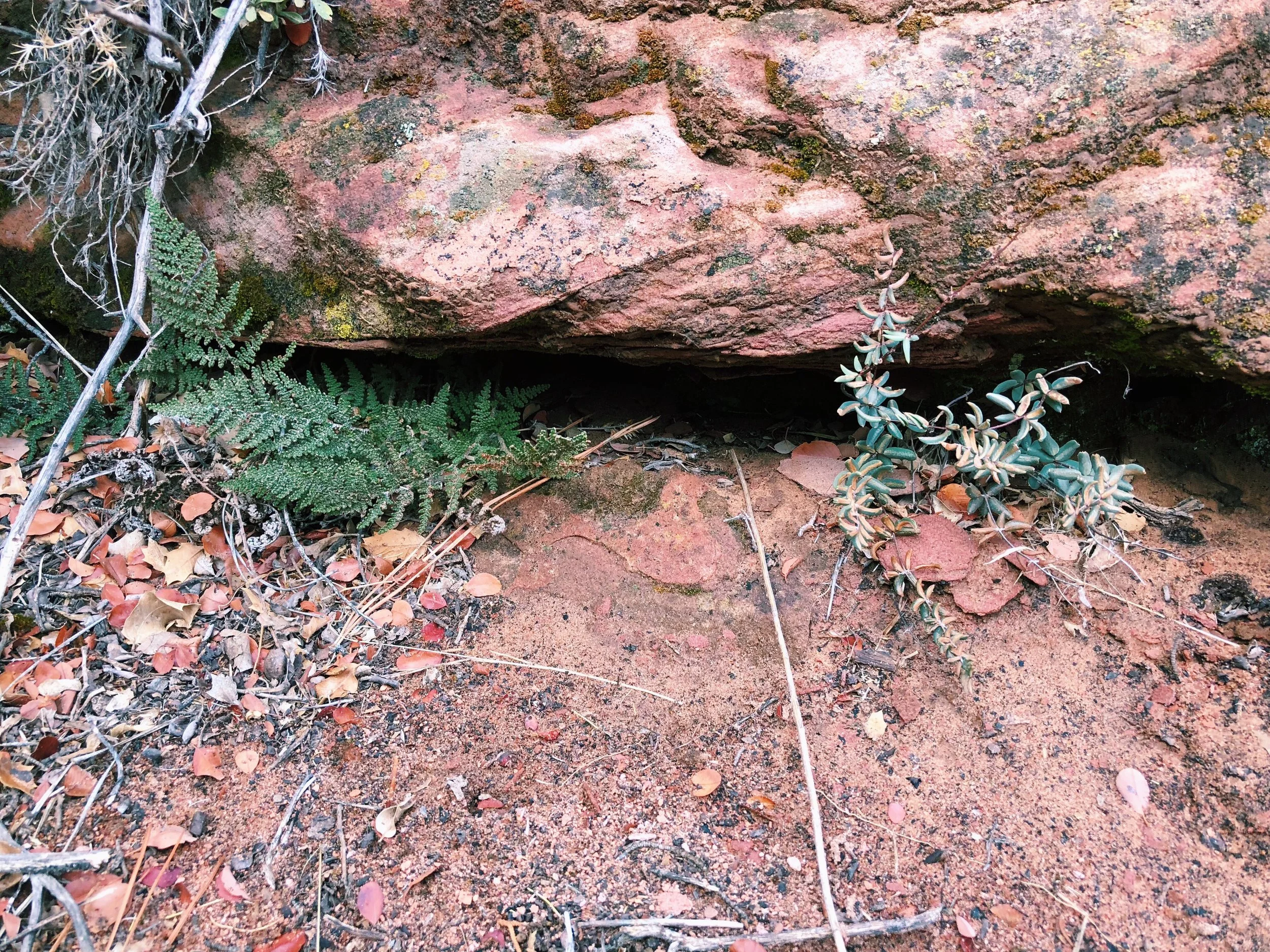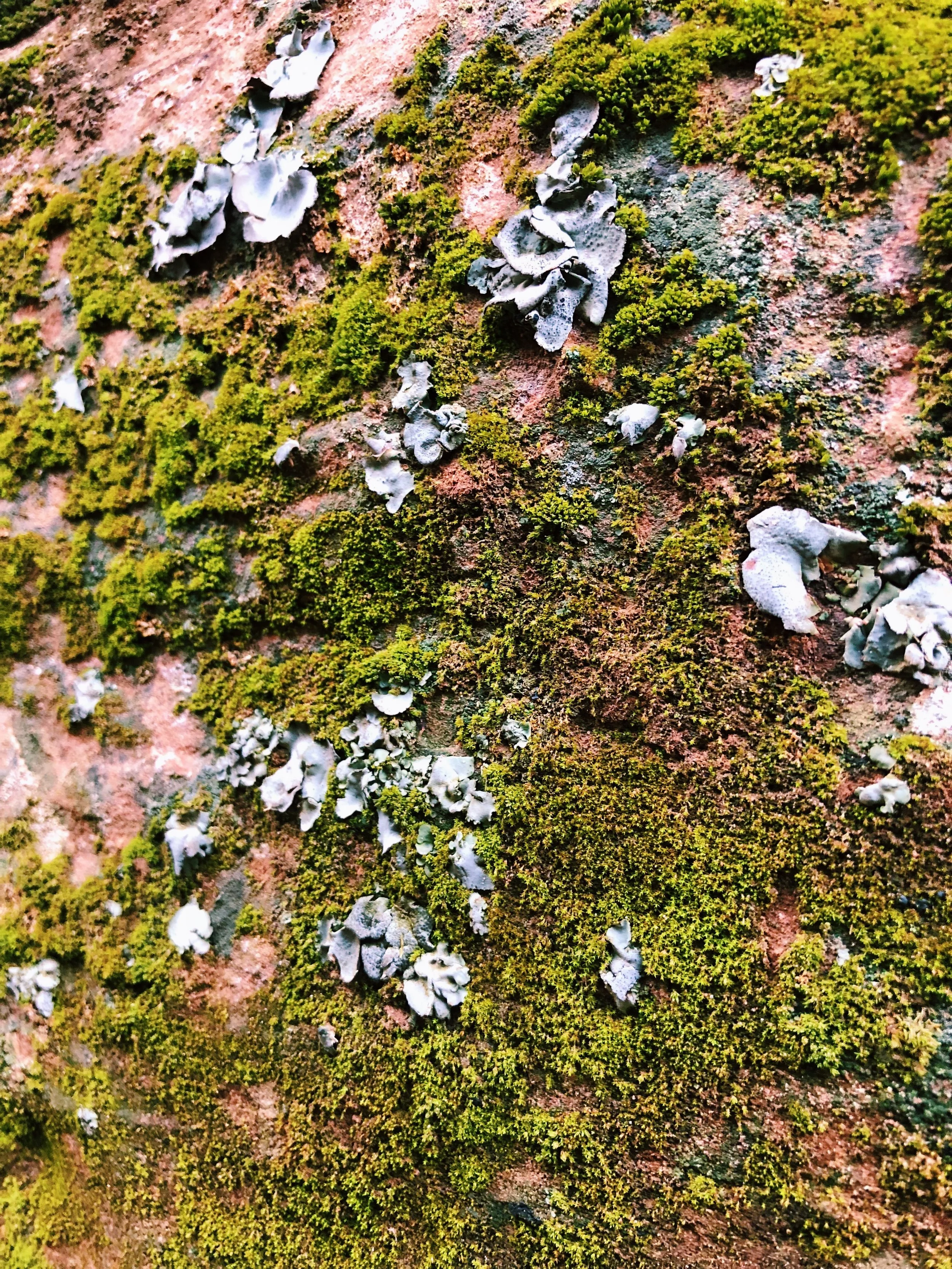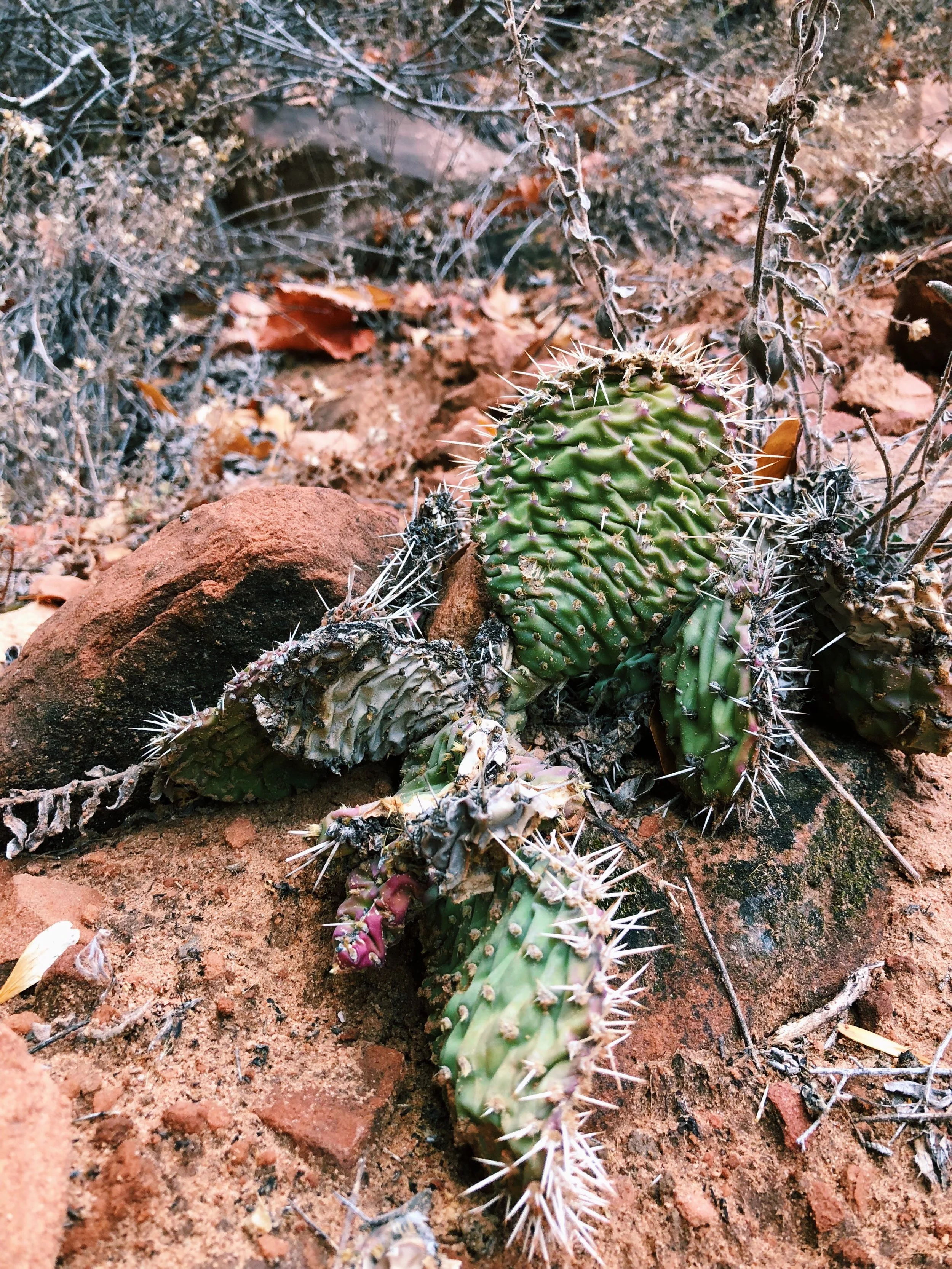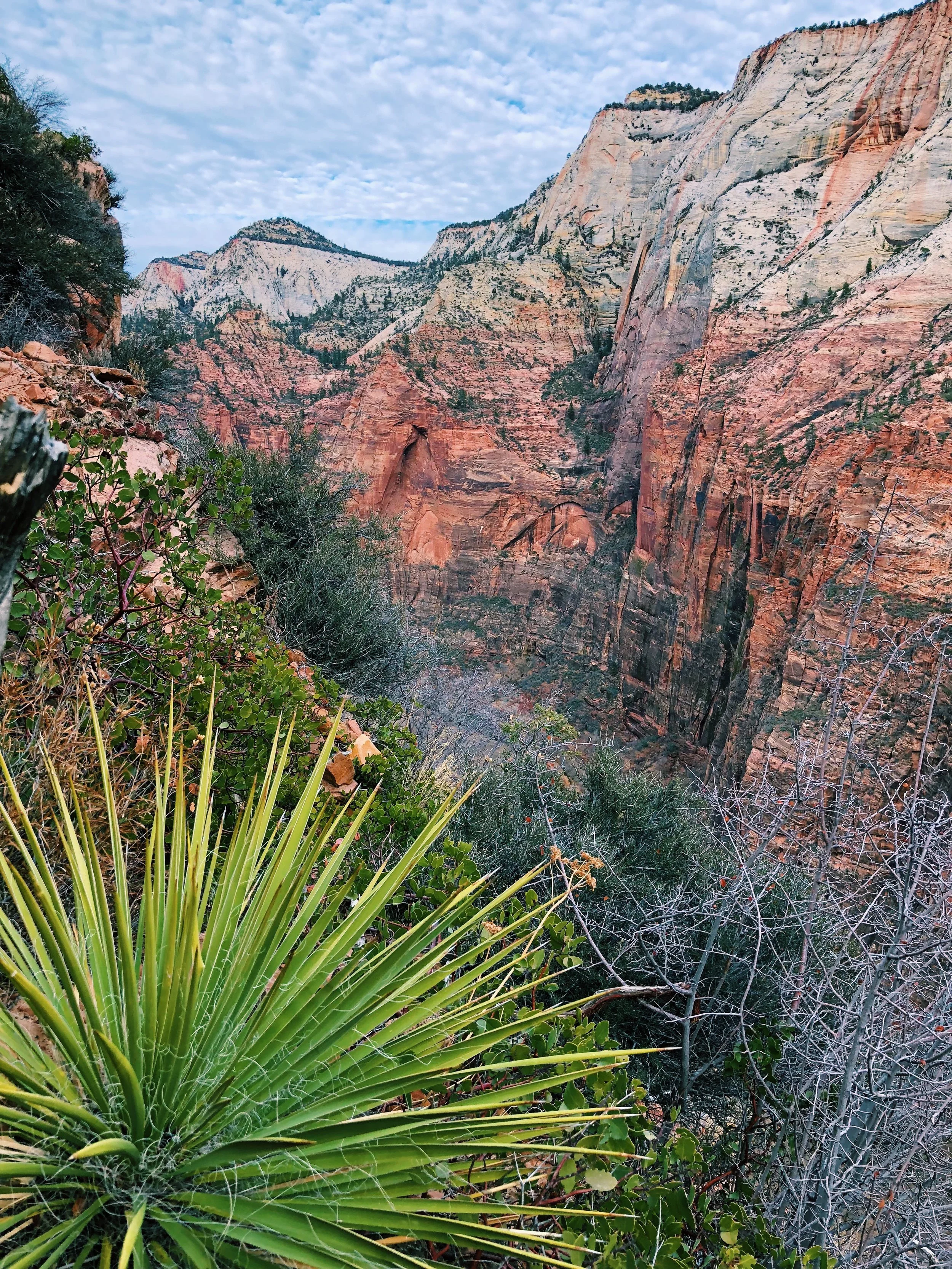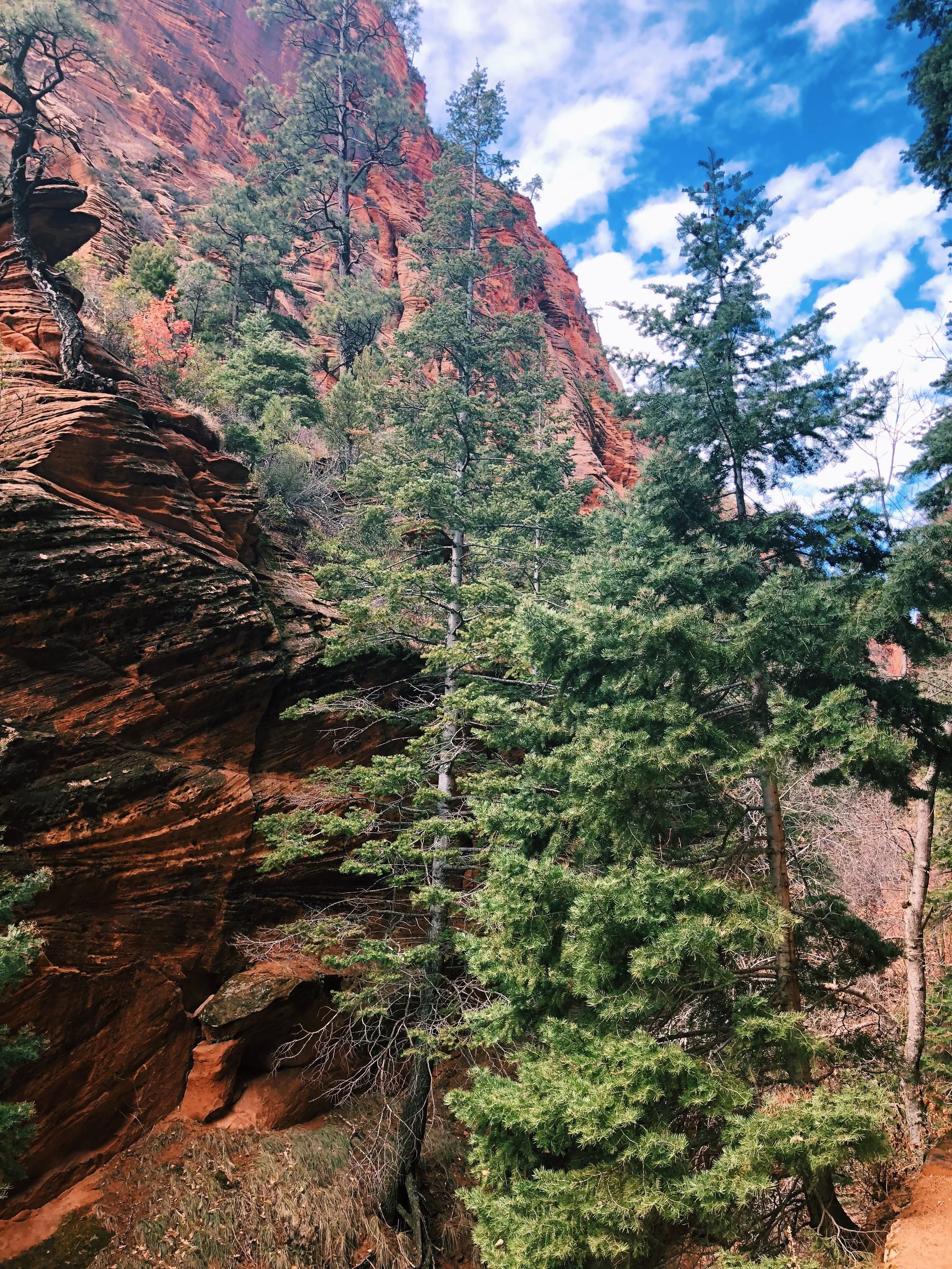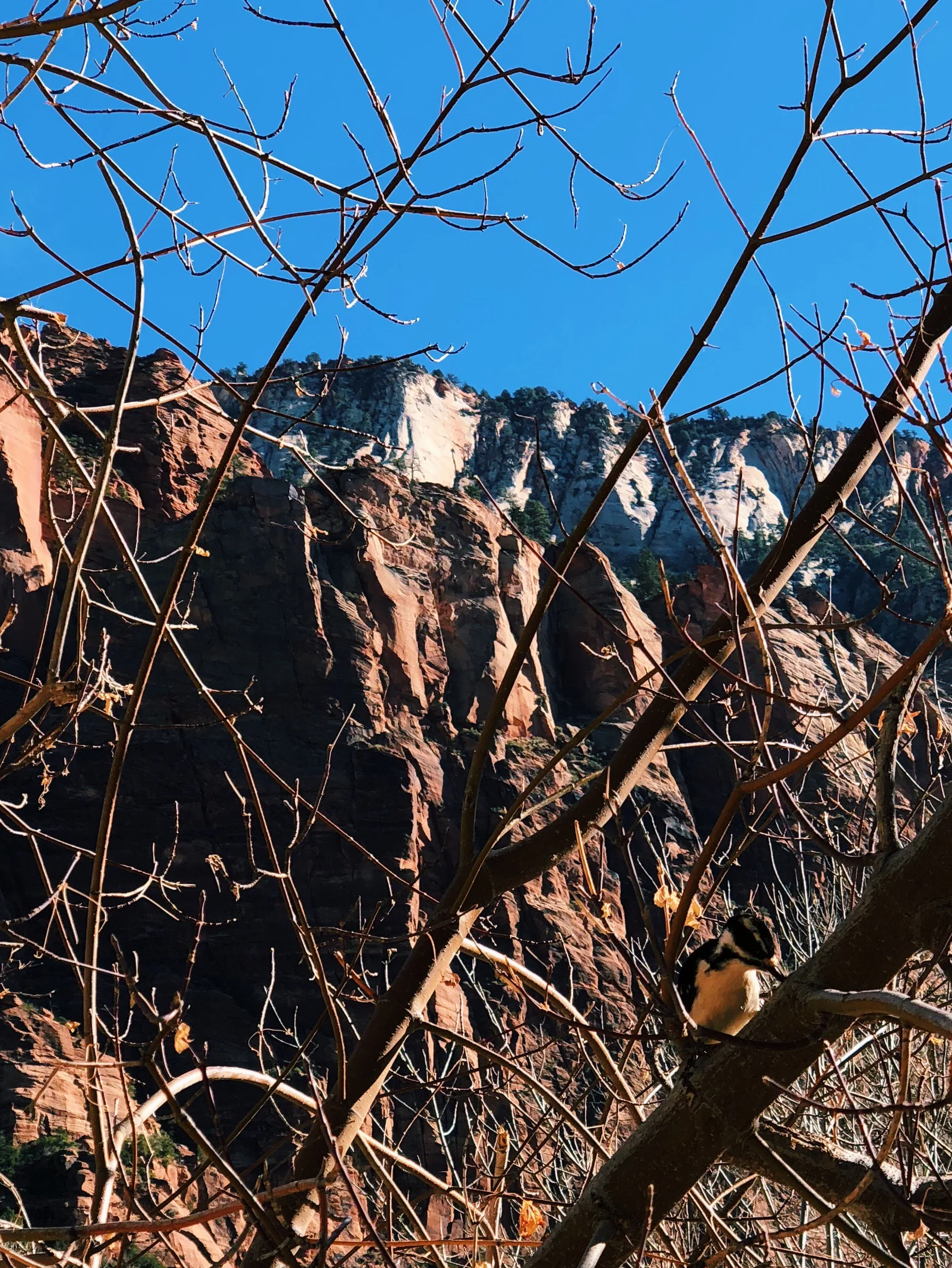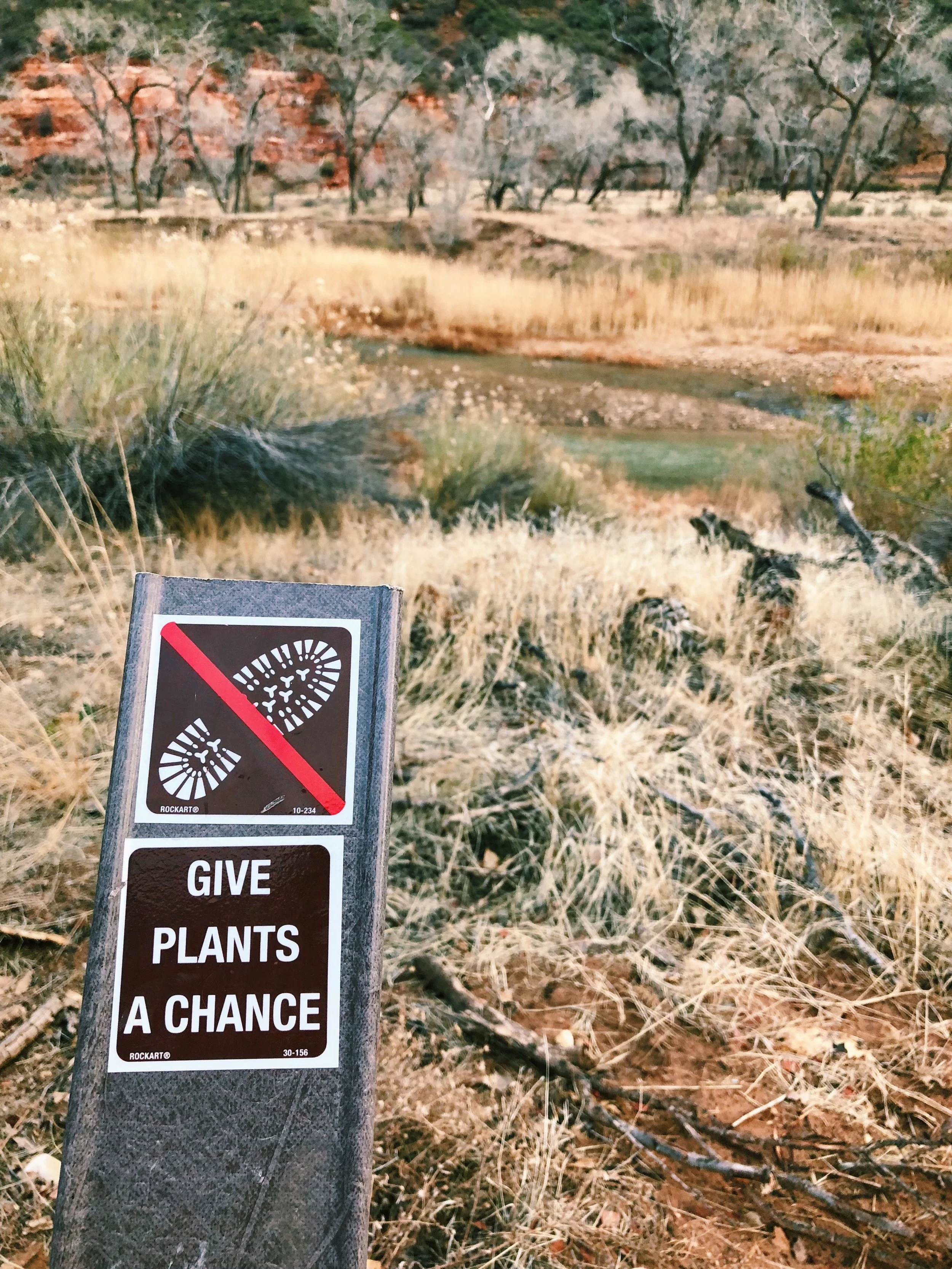Zion National Park
Zion Valley, Zion NP
In early January, I visited Zion National Park in southwestern Utah for the first time. The Virgin River cuts Zion Canyon and has created this giant, majestic land form. Bands of red sandstone paint the walls of this gorge, as if done with purpose.
These photos were taken on a number of different trails, including Angels Landing, Weeping Rock, The Narrows, and Emerald Pools. The plant palette is very diverse here; riparian species mixed with succulents and large, evergreen trees. It reminds me a great deal of Big Bend NP. In fact, a lot of the same species are found in both parks, even though they are 1,000 miles apart.
Adiantum capillus-veneris, Maidenhair fern
Water seeps out of the sandstone walls all over Zion Canyon, and much of it takes hundreds of years to filter from the tops of the mountains to the Virgin River. The great number of springs and weeps create micro-climates of ferns and other riparian species, and sometimes they are cantilevered over cliff faces as a sort of hanging garden.
Adiantum capillus-veneris, Maidenhair fern
(L) Cheilanthes covillei, Coville's lip fern and (R) Pellaea glabella, Smooth cliffbrake
Lichen
Moss
Petrophytum caespitosum, Rock spirea
Rock spirea is a mat-like perennial that clings to rocks and cliff faces while sending up small flowers that give way to these seed heads in the above photo. This species is the most commonly found in the continental US, and grows from west Texas to eastern California and up to Idaho and Montana.
Aquilegia chrysantha, Gold columbine
New growth is sprouting on this gold columbine that has found a home under a large seep where moisture is plentiful.
Heuchera parvifolia, Littleleaf alumroot
There are many species and varieties of Heuchera grown in nurseries and used in designed landscapes, desirable for their foliage that comes in a range of colors from gray to purple to chartreuse. This specimen is rather drab by comparison, but I am always impressed by the durability of the genus.
Mahonia repens, Creeping mahonia
Mahonia is used in designed landscapes around the country, so it was refreshing to spot this species in its native habitat. This creeping mahonia is found throughout the western US, from the Rocky Mountains to the Pacific Ocean. The foliage is normally green, but the stresses of cold weather have turned the leaves into a beautiful plum color. Buds were just about to pop open on the plant below.
Mahonia repens, Creeping mahonia
Datura wrightii, Sacred datura
I was excited to find this species in Zion NP. There is a specimen growing in my own garden in Dallas, and I have observed them in the Chinati Mountains of far western Texas. Before these spiny seed pods came around, there were large, white blooms that opened at night, each only lasting maybe 2 or 3 nights.
Chrysothamnus sp., Rabbitbrush
I do not have any experience with Rabbitbrush as it does not grow in any part of Texas, but the canyon was covered in it. Before dormancy, the blooms are yellow and make a great host plant for insects and wildlife.
Penstemon palmeri, Palmers penstemon
I find the Penstemon genus one of the most beautiful and worthy of praise. Of course, they don't give much of a show during the cold months, but the above species will send up 2' tall spikes of pink flowers in the spring. If you're looking for a species endemic to Texas, don't miss P. havardii.
Vitis arizonica, Canyon wild grape
Much like the wild grapes of Texas, this Zion-native seems to be pretty aggressive. But the fruit is desirable to animals and humans alike, even if the pit is rather large.
Quercus turbinella, Scrub live oak
There are only a few species of oaks in the park, and this scrub oak is probably the most prevalent. At first glance, the coloring and shape of the leaves could suggest it is a Mahonia. As its common name suggests, this oak grows more as a shrub and keeps its leaves all year. I find it pretty attractive.
Opuntia polyacantha, Plains prickly pear
This prickly pear was not the most picturesque specimen, but most occurrences of this species that I observed while hiking shared a similar look. White spines are an indicator of the species, and the shriveled skin is a result of cold and/or dry conditions.
Opuntia phaeacantha, Tulip prickly pear
I have observed O. phaeacantha in Texas before, but the appearance was significantly different. Opuntia species are chronically difficult for me to identify correctly, and I am not 100% confident in this ID.
Yucca baccata, Datil yucca
This yucca's coloring and strong leaves make it particularly attractive, in my opinion. You can see the spent flower stalk from earlier in the year. The species grows mostly in Arizona and New Mexico, but is distributed in a few states surrounding.
Yucca angustissima, Narrowleaf yucca
Initially, one could mistake this species for Y. arkansana. Of course, the range of that yucca is restricted to Arkansas, Oklahoma, and Texas, so I knew this couldn't be it. Distribution of Y. angustissima occurs in the four corner states and is concentrated in Arizona. In the spring, you would see that the flower set on Y. angustissima is heavier than of Y. arkansana.
Arctostaphylos patula, Greenleaf manzanita
Manzanita is a small tree that I wish was endemic to Texas, but I guess that makes it even more special. It is pretty similar to Arbutus, or madrone, as the bright red bark is a signifier of both genera. Later in January and into February these will push blooms in shades of pink that lead to small fruit in shades of red and brown.
Fraxinus anomala, Singleleaf ash
Singleleaf ash is the only species in the genus that has simple leaves instead of compound, and only one of two ash species that grows in Zion NP. A signature of ash trees when their branches are winter bare are the winged seed pods that flutter to the ground when disturbed. In this way the wind is a primary player in the natural distribution of the seed.
Pinus edulis, Colorado pinyon pine
The native range for this Pinus species overlaps Yucca angustissima and is distributed throughout the desert southwest. This species is known for its adaptability to rocky sites; its roots sprawl across slabs of rock and anchor itself in the narrowest of cracks.
Abies concolor, White fir
This is the only fir species found in the park, and is kind of special when you consider its arid surroundings. I would normally associate this evergreen with more alpine conditions, but shaded canyons create an ideal habitat. The species name comes from the Latin phrase meaning same color throughout.
(L) Abies concolor, White fir and (R) Acer grandidentatum, Bigtooth maple
Acer grandidentatum, Bigtooth maple
Similar to the mountains of west Texas, Zion is home to the bigtooth maple. Well into January, this tree was still holding onto its brilliantly-colored fall foliage.
Acer grandidentatum, Bigtooth maple
This park contains an incredibly diverse plant palette, and every hike that we want on was beautiful. I would like to make it back during the spring to see the blooms on many of the species outlined here.
Woodpecker




